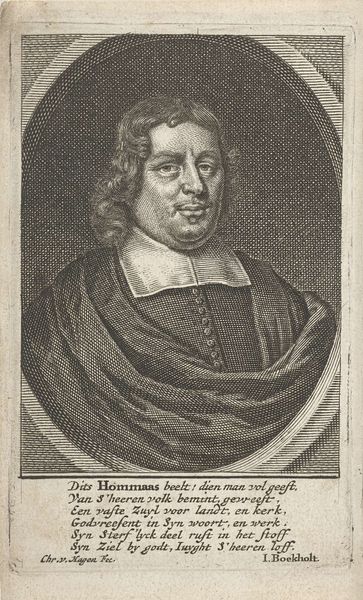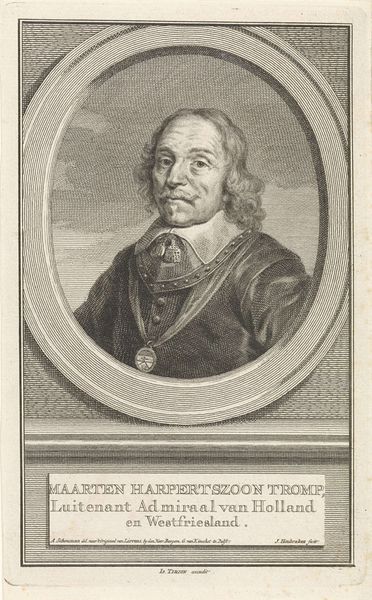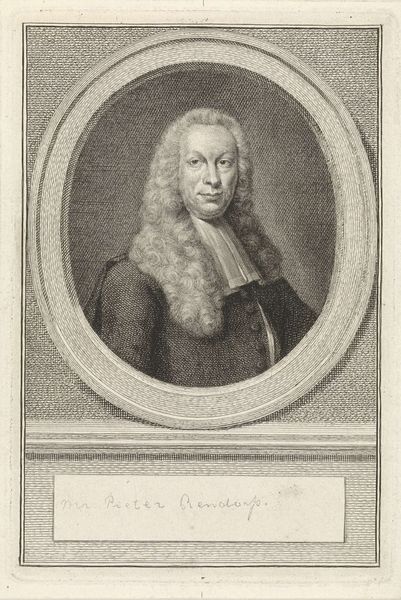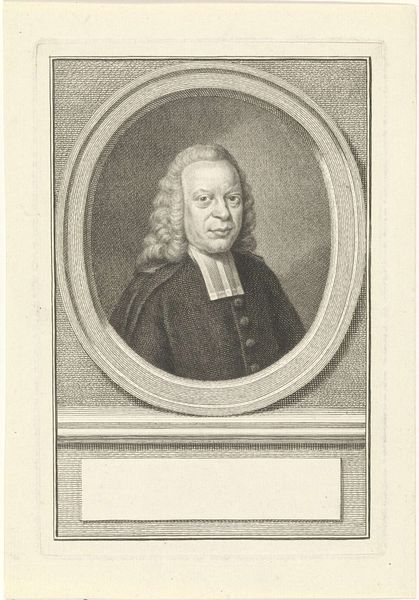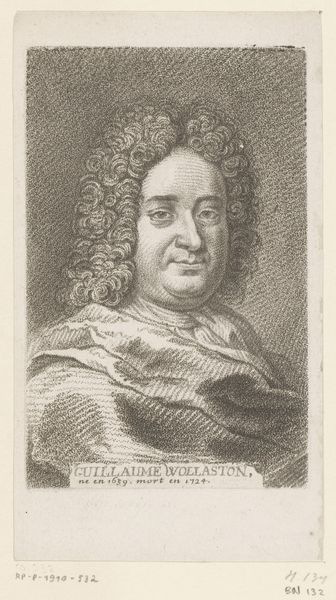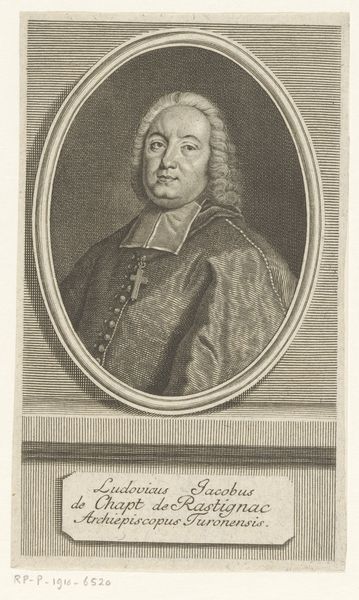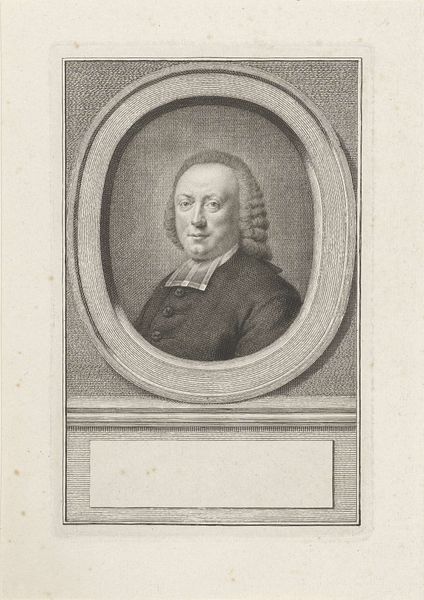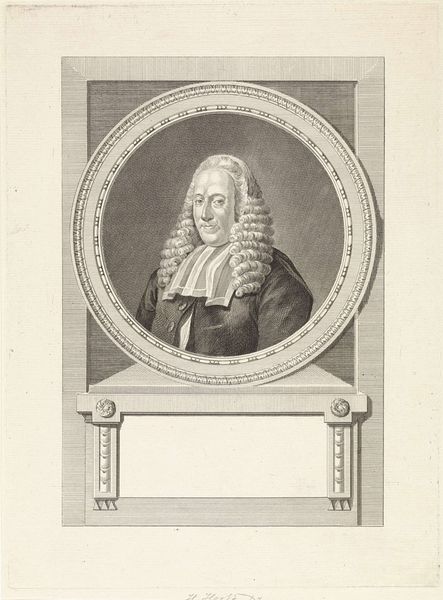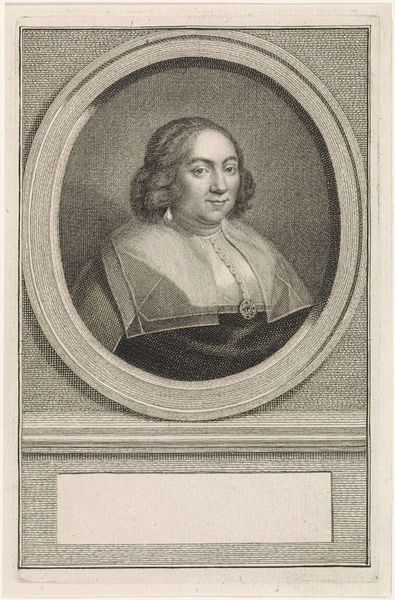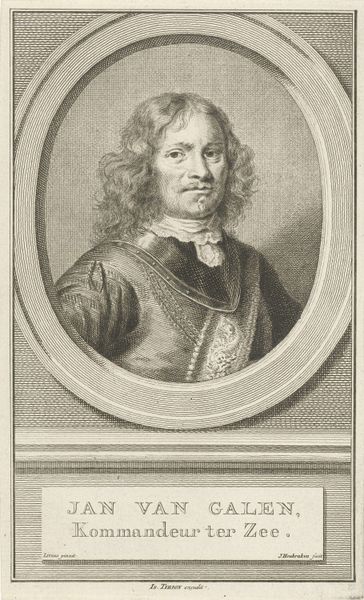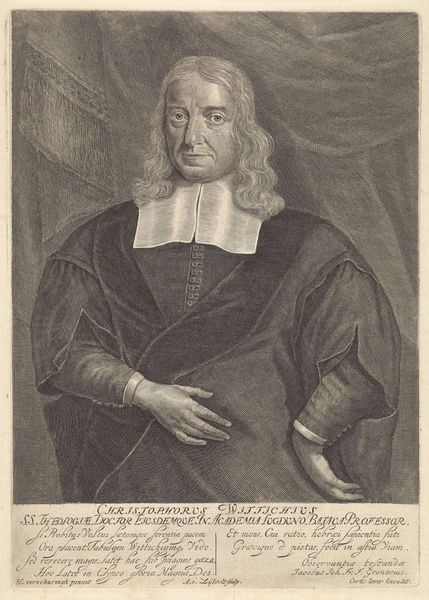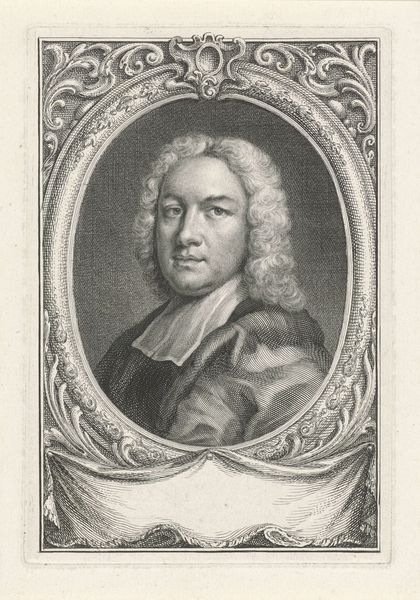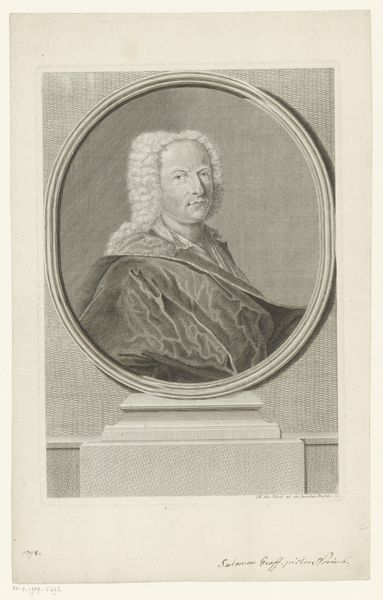
print, engraving
#
portrait
#
pencil drawn
#
baroque
# print
#
old engraving style
#
charcoal drawing
#
figuration
#
portrait reference
#
line
#
engraving
Dimensions: height 147 mm, width 90 mm
Copyright: Rijks Museum: Open Domain
Curator: Here we have "Portret van Claes Bruin," an engraving by Jacob Houbraken, dating from somewhere between 1732 and 1758. It's currently held here at the Rijksmuseum. Editor: My first impression? Weighty. Not just in the subject's... physical presence, but in the gravitas of the portrait itself. The man looks like he carries the world's bookkeeping on his shoulders. Curator: It’s certainly meant to convey authority and perhaps, civic responsibility. Portraits like this were commissioned to project a certain image of the sitter within the burgeoning merchant class of the Dutch Republic. Houbraken, a key figure in disseminating images of prominent citizens, was instrumental in shaping their public perception. Editor: Right, it's less about capturing a likeness and more about creating an ideal – an icon, even. The severe expression, the formal drape of the cloak, even the way he’s framed within that oval… it's all very deliberate. Almost theatrical, isn’t it? Like he's permanently on stage. Curator: Indeed. Houbraken's skill lies in rendering the textures and details with precision, lending an air of authenticity. But we shouldn’t mistake the representation for reality. The choice of pose, the embellishments, they all served to elevate Bruin’s status. It's crucial to remember these are constructions. Editor: True. But still, look at those lines around his mouth. They speak of late nights, of difficult decisions. The engraver has imbued the work with humanity too. It’s a balancing act, I suppose – idealization versus something relatable. Though the work isn't painterly, the depth of the lines are a marvel to the eye. Curator: That tension between the individual and the archetype is key to understanding these portraits and their role in 18th-century society. These were not just images, they were tools for social mobility. Editor: I still think he looks like he desperately needs a vacation. But one paid for handsomely. Anyway, thank you Jacob Houbraken for sparking such discussion and inner journeys! Curator: Indeed, it's an interesting artifact that says quite a lot about the time.
Comments
No comments
Be the first to comment and join the conversation on the ultimate creative platform.
